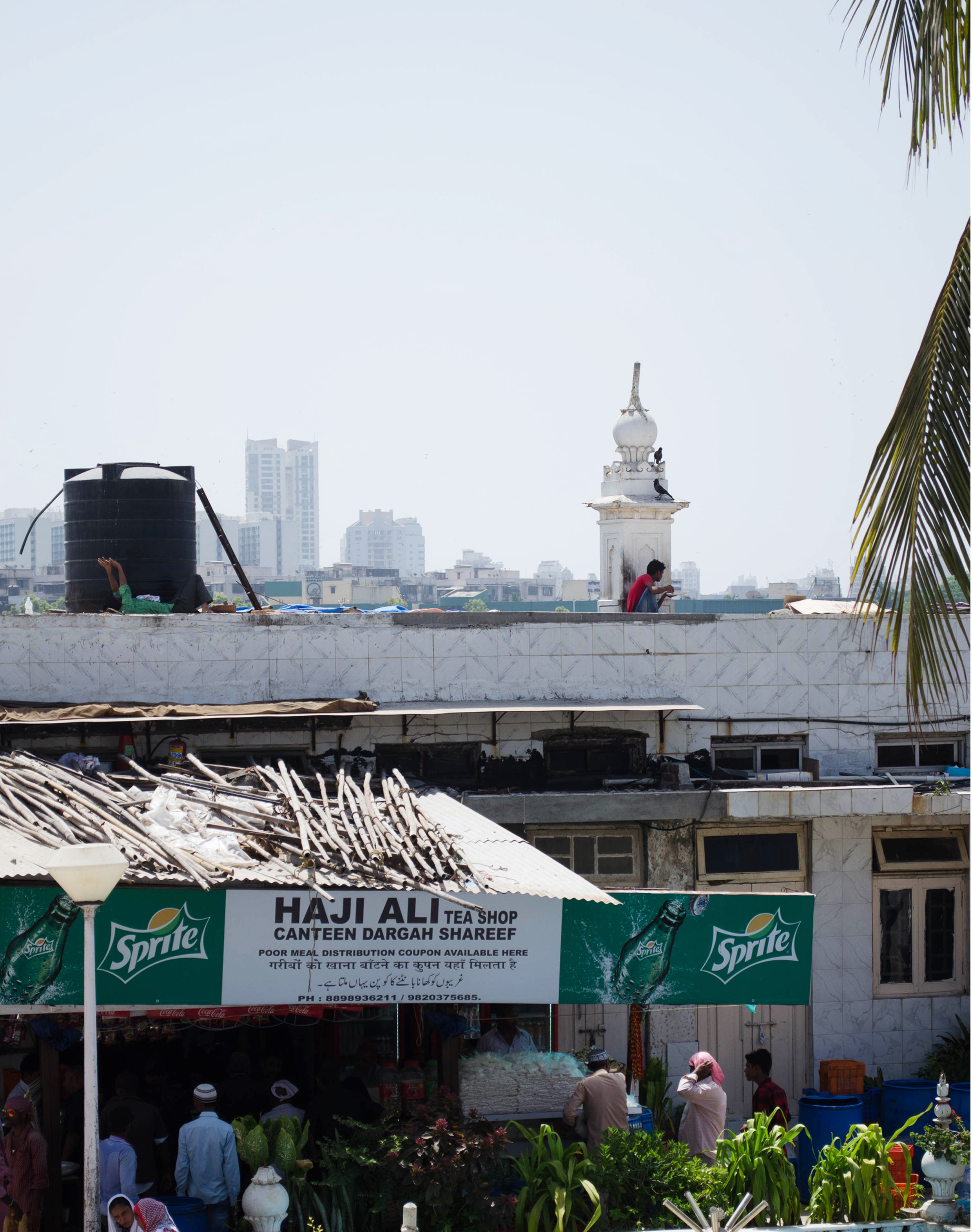
Uploaded on 2017-06-02 by Sushmitta Renganathan
The Visible Information: The picture was taken at the Haji Ali Dharga in Mumbai, India. As evident in the picture, this Dharga (Mosque) is a popular destination for both tourists and locals, regardless of the peak summers heat. With the bustling crowds, the popular skyline of Mumbai forming its backdrop, and the Arabian Sea surrounding it, the Haji Ali Dharga is almost an embodiment of the spirits of Mumbai. It is even complete with the toilets and canteen facilities seen in the picture. The Invisible Information: a) But on looking closely at the roof of the canteen, you may notice a man resting while shielding himself the sharp sunlight, a bottle placed to catch water from the tank when it over flows, and another man eating his meal under the meager over-hang of a minaret. These men who are daily wage workers coming from rural areas and slums around to earn for themselves and their families, and are unable to find affordable, decent living quarters nearby. b) Contrary to the above mentioned situation, the tall apartments in the background are predominantly unoccupied, although brought by residents at high prices as investments in a popular locality. Processing of the Invisible Information: By understanding that the important nodes in a city, such as the Haji Ali Dharga, are major generators of employment to the underprivileged people of the society, the policy makers must first address the existing problems in the area such as homelessness and other improper living conditions, before allotting the available space to real-estate developers considering the profit they generate. By this, the wastage of space and homelessness can be alleviate each other while addressing the important cause of humanity and providing the workers with a better living conditions. The remaining surrounding land can still be the centers of important real-estate development, but around a more sustainable center.